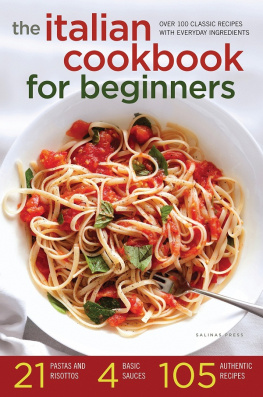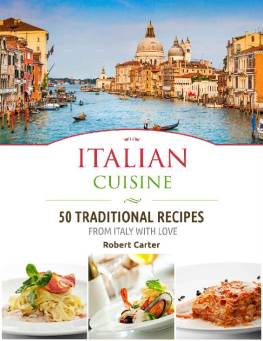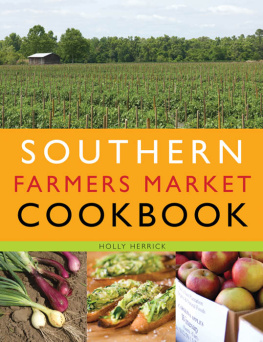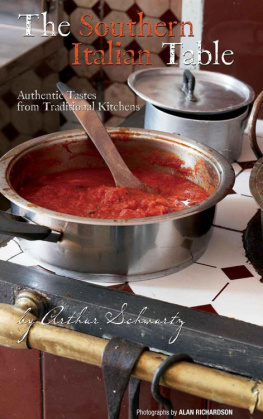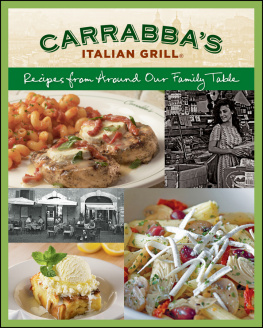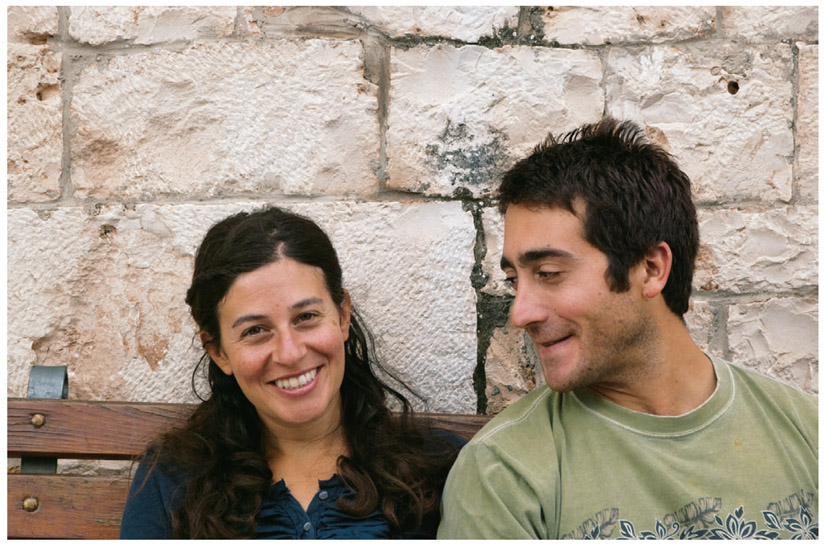2012 Melissa Pellegrino and Matthew Scialabba
ALL RIGHTS RESERVED. No part of this book may be reproduced or transmitted in any form by any means, electronic or mechanical, including photocopying and recording, or by any information storage and retrieval system, except as may be expressly permitted in writing from the publisher. Requests for permission should be addressed to Globe Pequot Press, Attn: Rights and Permissions Department, P.O. Box 480, Guilford, CT 06437.
Lyons Press is an imprint of Globe Pequot Press.
Project editor: David Legere
Text design: Sheryl Kober
Layout artist: Nancy Freeborn
Photos by Melissa Pellegrino and Matthew Scialabba unless otherwise noted.
Library of Congress Cataloging-in-Publication Data is available on file.
ISBN 978-0-7627-7082-3
Printed in the United States of America
10 9 8 7 6 5 4 3 2 1
 | ABOUT THE AUTHORS |  |
Matthew Scialabba and Melissa Pellegrino, a husband-and-wife cooking and writing team, met while both living in Italy. Their shared passion for Italian food and culture led them to embark on many culinary journeys throughout the country. These experiences have included apprenticing at a Ligurian vineyard, graduating from a professional culinary school in Florence, and working and cooking together at several Italian agriturismi, which eventually sparked their dream of writing their first book, The Italian Farmers Table, and its sequel, The Southern Italian Farmers Table. For more information about the authors and this project, please visit their website at www.theitalianfarmerstable.com. They live in Guilford, Connecticut and are the owners of Bufalina Wood Fired Pizza.
 | ACKNOWLEDGMENTS |  |
F ive months of schlepping across central and southern Italy requires stamina and endurance and a somewhat organized itinerarywhich wasnt always the case for us. From our home in Connecticut, using the Internet, books, and personal recommendations, we weeded through the thousands of agriturismi out there, hoping to select a variety of different farms based on their agricultural activities, style of cooking, and accommodations. An e-mail was sent, claiming our intentions and asking the farms if they would be willing to have two Americans enter their lives for a few days, to learn and absorb their way of life by spending time in their fields and kitchens. The responses trickled in slowly; farmers arent always checking their inbox. This book would not have been possible without the generosity and enthusiasm of each agriturismo that welcomed us with open arms and brought us into their lives and homes. Grazie mille to everyone at Sa Mandra, Sa Tiria, Muto di Gallura, Giardino di Vigliano, Il Cortile, Porta Sirena, Santa Marina, Dattilo, Le Puzelle, Carrera della Regina, Torrevecchia, Narducci, Serragambetta, Masseria Santa Lucia, I Dolci Grappoli, Pietrantica, Le Magnolie, Campoletizia, Costa della Figura, Giardino degli Ulivi, Villa Dama, Malvarina, Fonte Antica, Terra Etrusca, San Martino, Casale Verdeluna, Mole sul Farfa, Santa Mamma, Tenuta Roccadia, and Baglio Fontana.
 | Once again to our families, for their unconditional support. |
 | To our great friends we are lucky to have. |
 | To Deb and Jim, for your culinary inspiration. |
 | To Liana and Tony, for teaching us about your southern Italian roots. |
 | To everyone who bought our first book that made this sequel possible. |
 | To Bishops, Fortes, and Star Fish for making shopping in Guilford feel like we are back in Italy. |
 | To Mary Norris and everyone at GPP for making this dream happen. |
To Japhy and her insatiable appetite.
 | INTRODUCTION |  |
T he Italian agriturismo system was developed to preserve the act of farm-to-table eating long before it became a trendy slogan. It was born from the need to help the thousands of family farms across the country that were struggling to surviveyet essential lifelines to the pulse of Italian cuisine. Opening their doors to overnight guests and diners allowed farmers to supplement their incomes and showcase the flavors of their land by providing meals prepared with their own seasonal ingredients. The success of the movement penetrated deep into rural Italy, as abandoned farms were restored to their former brilliance, and travelers from around the world embraced the concept of a vacation soaked in the splendors of the Italian countryside. Today the Italian agriturismo symbolizes a revival of times past; it speaks of practical healthy living that is sustainable and a model of living off the land.
After our first experiences working on several Italian agriturismi upon graduating from culinary school, we were deeply moved by the simplicity of cooking with ingredients grown and raised out the kitchen door. There was something that we connected with, that just seemed real and felt right about washing dirt off freshly picked vegetables, or noting the vibrant orange color of the freerange egg yolks we were using to make fresh pasta. We grew enamored with the magic that happened in cooking with an entire farm at our disposal. We returned home with this philosophy engraved in our budding culinary minds, and hatched a plan that was full of unbridled youthful dreamsto write a cookbook about the lives and recipes from agriturismi throughout all twenty regions of Italy. Through tenacity, determination, and a little luck, we completed half of our goal with our first cookbook about the agriturismi of northern Italy,


